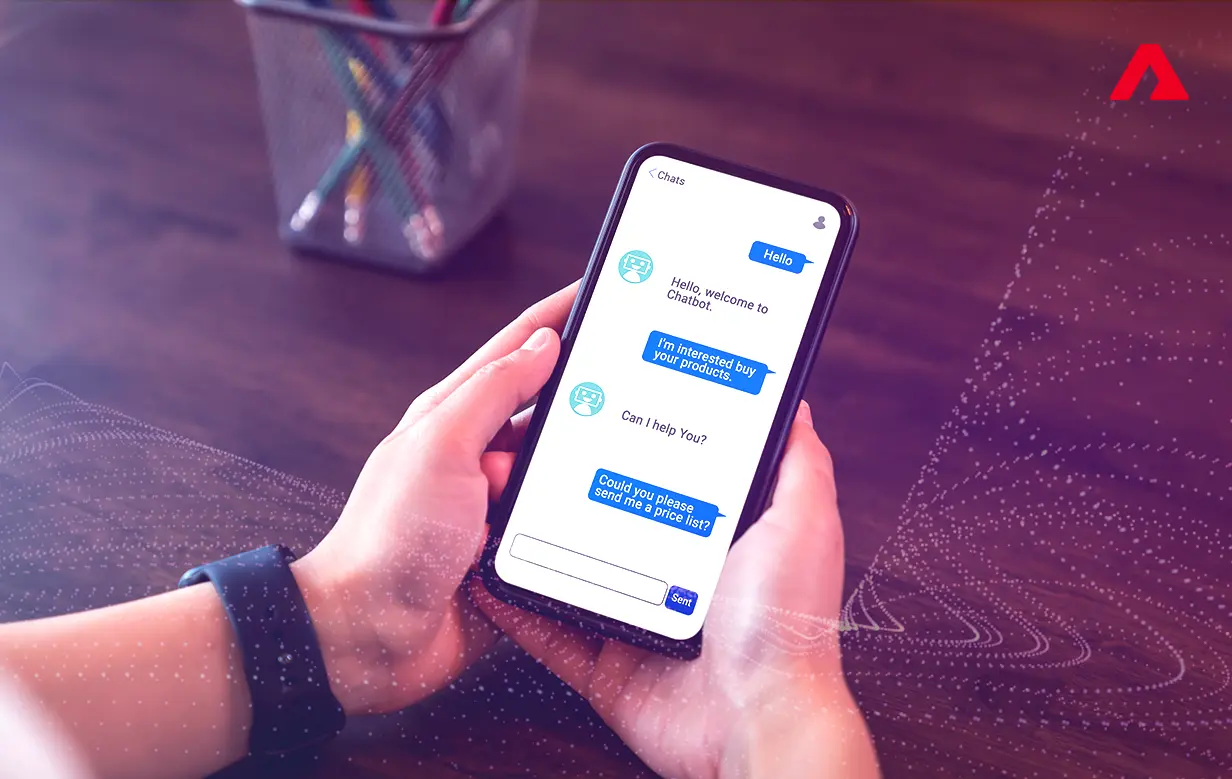Mobile applications have evolved far beyond being simple tools for browsing, shopping, or communication. Today, apps are expected to provide personalized experiences, instant responses, and human-like interaction. This shift has been largely fueled by the rise of conversational user interfaces (CUIs) technology that allows users to interact with apps through natural language, whether via text or voice.
For Android app developers and businesses alike, integrating conversational UI is no longer a luxury. It is becoming a necessity as users increasingly prefer applications that feel intuitive, responsive, and almost “alive.” From chatbots to voice assistants, conversational interfaces are reshaping how people interact with technology.
Let’s explore the top benefits of integrating conversational UI in custom Android apps with this blog. And understand why this innovation has the potential to transform both user experiences and business outcomes.
Key Advantages of Adding Conversational UI to Android Applications
Enhancing User Engagement
One of the most significant advantages of conversational UI is its ability to keep users engaged. Traditional interfaces often require users to click through multiple screens or menus to find what they’re looking for. Conversational UI simplifies this process by allowing users to simply ask questions or give commands in natural language.
For example, instead of navigating through categories in a food delivery app, a user could type or say, “Find me the best pizza near me”. Within seconds, the app can respond with tailored results. This fluid, interactive experience not only saves time but also keeps users invested in the app.
The more engaging the app feels, the higher the chances of repeat usage. In competitive markets like Android, where millions of apps compete for attention, an engaging conversational interface can make all the difference.
Creating Personalized Experiences
Personalization has become the cornerstone of digital success. Users don’t just want apps that work; they want apps that understand their preferences and deliver experiences tailored to them. Conversational UIs excel in this domain.
By remembering previous interactions, conversational interfaces can offer recommendations and responses that feel uniquely designed for each user. For example, a fitness app with conversational capabilities might not only track workouts but also suggest routines based on a user’s past activity, goals, and even current mood.
This level of personalization makes users feel valued and understood. In turn, it fosters loyalty that something businesses are constantly striving to achieve in today’s crowded app ecosystem.
Streamlining Onboarding Processes
Onboarding is often the first major hurdle in user retention. Many users download an app, only to abandon it after struggling with lengthy setup procedures or unclear instructions. Conversational UIs can dramatically simplify this stage by guiding users step by step in a natural, conversational tone.
Instead of overwhelming new users with forms and menus, the app can ask questions like: “What do you want to achieve with this app?” or “Would you like me to set reminders for your tasks?”. This approach makes onboarding feel less like a chore and more like a friendly conversation.
As a result, users are more likely to complete the setup process, explore the app’s features, and continue using it long term.
Boosting Accessibility
Accessibility is another area where conversational UI shines. Not all users are equally comfortable navigating complex menus, typing on small screens, or interpreting icons. Conversational interfaces, particularly voice-driven ones that break down these barriers by making apps usable for a wider audience.
Consider elderly users who may struggle with traditional touch-based navigation. A voice-enabled conversational UI allows them to perform tasks hands-free, simply by speaking. Similarly, users with disabilities can benefit immensely from conversational commands that bypass traditional input methods.
By enhancing accessibility, businesses not only expand their user base but also demonstrate inclusivity, which resonates strongly with modern audiences.
Read More: Text-to-Speech Android App: The Future of Technology
Driving Higher Customer Support Efficiency
Customer support is one of the most resource-intensive functions for businesses. With conversational UI, many of these interactions can be automated without sacrificing quality. Chatbots powered by conversational interfaces can handle common queries, troubleshoot basic issues, and even escalate more complex problems to human agents when necessary.
For example, in a banking app, a chatbot could instantly respond to questions like “What’s my current balance?” or “Show me my last five transactions” without requiring users to navigate through multiple menus. This immediacy enhances user satisfaction while reducing strain on customer service teams.
By balancing automation with human intervention, businesses can achieve faster response times, lower operational costs, and improved overall customer experience.
Encouraging Continuous Interaction
Unlike traditional apps where user engagement often drops after initial use, conversational UIs encourage ongoing interaction. The conversational format feels natural, almost like texting a friend, which keeps users coming back.
Take the example of a personal finance app. Instead of passively waiting for users to open it, the app could send proactive prompts like “Would you like me to summarize your weekly expenses?” or “Do you want a reminder to pay your utility bill tomorrow?”. These interactions not only add value but also create habits that keep users engaged over time.
Continuous interaction means stronger brand loyalty, increased app stickiness, and ultimately, better business outcomes.
Preparing Apps for the Future of AI
Perhaps the most forward-looking benefit of conversational UI is its alignment with the future of artificial intelligence. As AI capabilities expand, conversational interfaces will only become smarter, more intuitive, and more capable of handling complex tasks.
By integrating conversational UI now, Android apps position themselves ahead of the curve. They create a foundation for future enhancements, such as predictive responses, sentiment analysis, and advanced personalization driven by machine learning.
In other words, businesses that adopt conversational UI early are preparing their apps not just for today’s users, but for the expectations of tomorrow’s AI-powered digital landscape.
Conclusion
The integration of conversational UI in custom Android apps goes far beyond novelty. It represents a fundamental shift in how users interact with technology. From enhancing engagement and personalization to streamlining support and improving accessibility, the benefits are both immediate and long-lasting.
However, successful implementation requires expertise. Designing conversational experiences that feel natural and intuitive is as much an art as it is a science. This is where the right development partner can make all the difference.
At Atharva, we are a leading Android App Development Company specializing in building custom apps that harness the power of conversational UI. Our team combines technical excellence with a deep understanding of user behavior, ensuring that the apps we create don’t just function—they connect. Whether you’re looking to enhance customer engagement, simplify onboarding, or future-proof your digital presence, we can help you achieve it with confidence.
Investing in conversational UI today is more than keeping up with trends; it’s about building meaningful digital experiences that resonate with users. And with the right partner, your app can be at the forefront of this transformation.
Contact us at contact@atharvasystem.com
Visit us at https://www.atharvasystem.com to learn more.
FAQs
1. What is a conversational UI in Android apps?
Conversational UI is a design approach that allows users to interact with apps using natural language, either through text or voice, instead of traditional menus and buttons.
2. How does conversational UI improve user experience?
It simplifies navigation, makes apps more intuitive, and creates personalized, engaging interactions that feel closer to human communication.
3. Can conversational UI replace human customer support?
While it can automate many repetitive queries, conversational UI works best when combined with human support for more complex issues.
4. Is conversational UI expensive to implement in Android apps?
The cost depends on complexity, but with the right development partner, businesses can achieve high ROI through increased engagement and efficiency.
5. How does conversational UI help with accessibility?
By supporting voice commands and simplifying navigation, conversational UI makes apps more usable for people with disabilities, elderly users, or those less tech-savvy.
6. Is conversational UI relevant for all industries?
Yes. From healthcare to retail, finance to education, conversational interfaces can add value by simplifying processes and enhancing customer engagement.
7. How can Atharva help integrate conversational UI into apps?
Atharva provides end-to-end development services, from designing intuitive conversational flows to integrating them into custom Android apps, ensuring seamless and user-friendly experiences.




 Insurance
Insurance


























